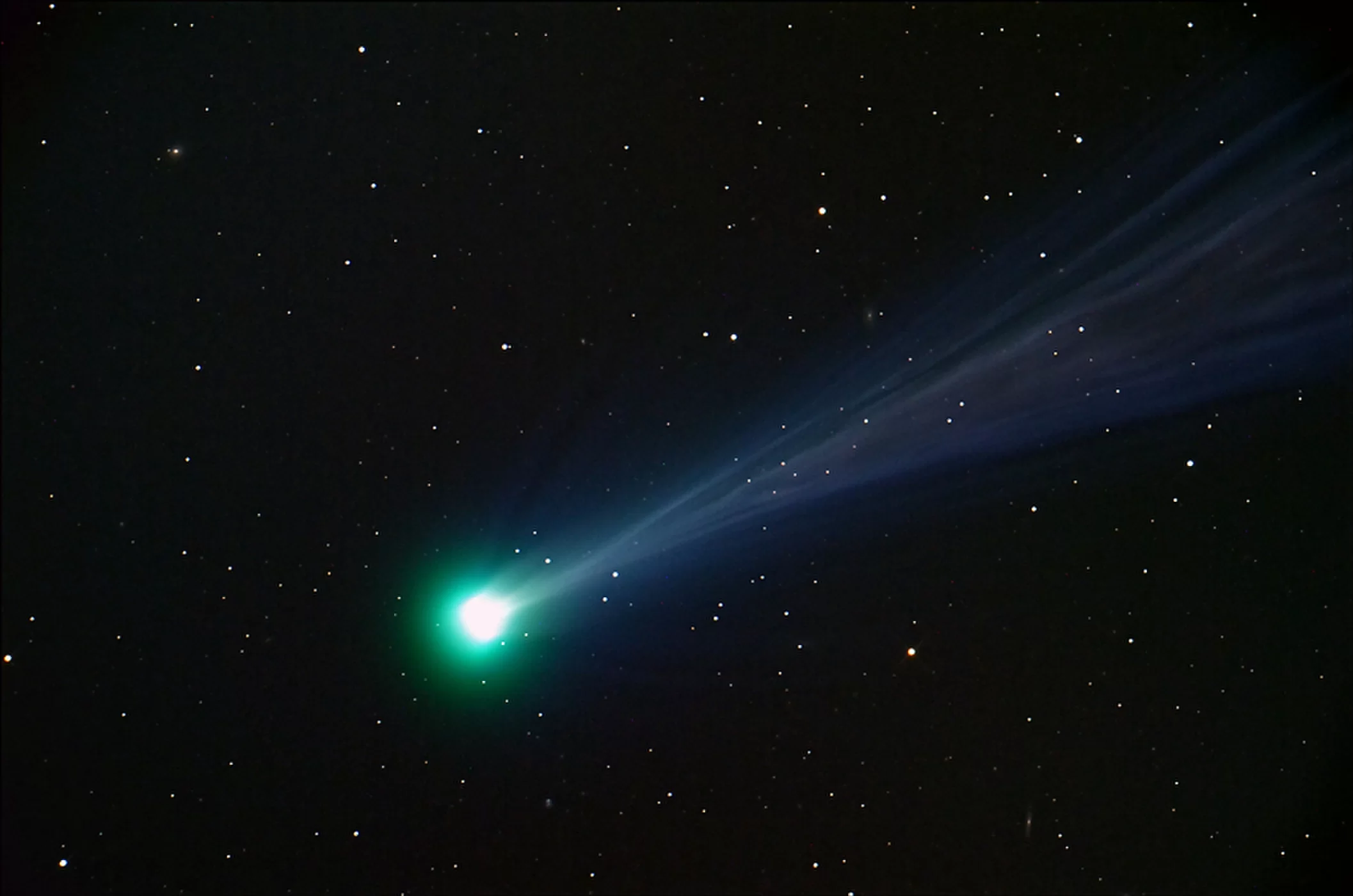What are Comets?
Comets are celestial objects present in the solar system. They are made up of frozen gases, dust particles and rocks. This is one of the reasons why they are known as snowballs, icy rocks, etc.
Where do they come from ?
When we find out where these comets were originated from it was found that they are present in a disc beyond Neptune and were orbiting the sun. Comets are present in different places ranging from the Kuiper Belt to Oort Cloud, the comets in Oort cloud take up to 30 million years to complete one orbit.
What exactly are they made up of ?
Let’s take an image so that we can see what we are talking about.

We can see that there two major parts of the comet, one bright head, and then there is a gas sort of layer that is the tail. The bright head is also known as the nucleus of the comet which is made up of the fuzzy ice. As and when the comet starts getting close to the sun it is affected by the sun i.e. solar coma. This leads to ice being converted as ion gases and might lead up to a few thousands of kilometers.
Will any Comet crash Earth?
The orbits of these comets which are present in the Oort cloud can’t be determined because we don’t have any powerful telescope which can resolve and follow the movement. NASA has a WISE spacecraft which tracks long-period comets which are pushed out of the Oort cloud. An interesting fact to note is that the comets that are observed are pushed out millions of years ago from the Oort cloud and are on its way towards the sun.
How are they Found?
You don’t need to have a Space Telescope to discover a comet, over the years many amateur astronomers have discovered comets from their home. How to differentiate between a star, this is a fuzzy object which would move in a different direction and not follow the direction of stars. If you think you have found one, check out the same in the next night and try to image the same with Charged Coupled Device (CCD) Camera or any other source. Once you are sure of the discovery report it to Central Bureau of Astronomical Telegram a.k.a CBAT - (http://www.cbat.eps.harvard.edu/), their website also contains the details of the latest discovery.
Can we see them with naked eye?
It totally depends on the magnitude of the comet. (http://www.aerith.net/index.html) This is a very useful website it provides information about all the visible comets when to see them, where to locate and new discoveries that are made. My personal favorite is the option to check out the weekly bright comets.
Happy Comet Hunting!
